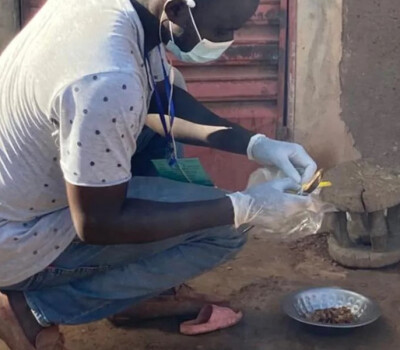Last year no tiger mosquitoes spotted in Belgium

Exotic mosquitoes such as the tiger mosquito have been able to establish themselves in Southern Europe and are increasingly heading our way as a result of globalisation and global warming. To prevent these species from getting a foothold in Belgium, ITM researchers and partner organisations have since July 2017 been monitoring 23 entry sites (potential risk areas) throughout the country on behalf of the federal and regional environmental and public health authorities.
Of the nearly 5400 mosquitoes and larvae collected from August to November 2017, less than 2% belonged to an exotic mosquito family. The Asian forest mosquito or Aedes japonicus was spotted in Namur and near the German border. This mosquito was again spotted in Namur two years later. The mosquito was also observed at the German border, probably because there is an established population of Aedes japonicus in Germany. The Aedes koreicus has been spotted in Belgium since 2007 and has now settled in our regions (Maasmechelen area). However, the population is small and does not cause a nuisance. Our researchers closely monitor the situation. One specimen of the species Anopheles pharoensis, an African malaria mosquito, was found at Liège airport. However, our temperate climate is not favourable for its survival.
The notorious tiger mosquitoes (Aedes albopictus), which like to travel with lucky bamboo plants and second-hand tires from Asia, have not been recently spotted in Belgium.
"The 23 import locations have been chosen strategically. Our suspicions that exotic mosquitoes enter via specific locations, such as trade routes and airports, were confirmed. It is important that this project is continued long term, to enable us to pinpoint new entry points of these exotic species and keep a close eye on them. If we know which species we are dealing with, we will be better able to monitor and control them," says Dr. Wim Van Bortel, MEMO project coordinator at ITM.
However, just because a few tiger mosquitoes have been spotted in Belgium does not mean we are at risk of a virus outbreak. They can transmit viruses from one human being to another. But for this to happen, the mosquito must first bite a person infected with the virus, before they can transmit it to another person. Furthermore, the transmission of the virus only happens when the virus and the exotic mosquito are present at the same location at the same time. That only works if the mosquito population is large enough.
ITM has long been monitoring exotic mosquitoes on specific locations in Belgium. Since July 2017 activities were extended to the entire territory in the framework of MEMO, “Monitoring of exotic mosquitoes in Belgium”. The project will run for three years and is funded by the Flemish, Walloon and Brussels-authorities and the Health, Food Chain Safety and Environment Federal Public Service as part of the national collaboration agreement on Environment and Health (NEHAP). ITM will carry out the project together with the Royal Belgian Institute of Natural Sciences (KBIN) and Barcoding of Organisms and Tissues of Policy Concern (BopCo). VECMAP information system provided by Avia-GIS is used for the collection of field and laboratory data.
Spread the word! Share this story on









